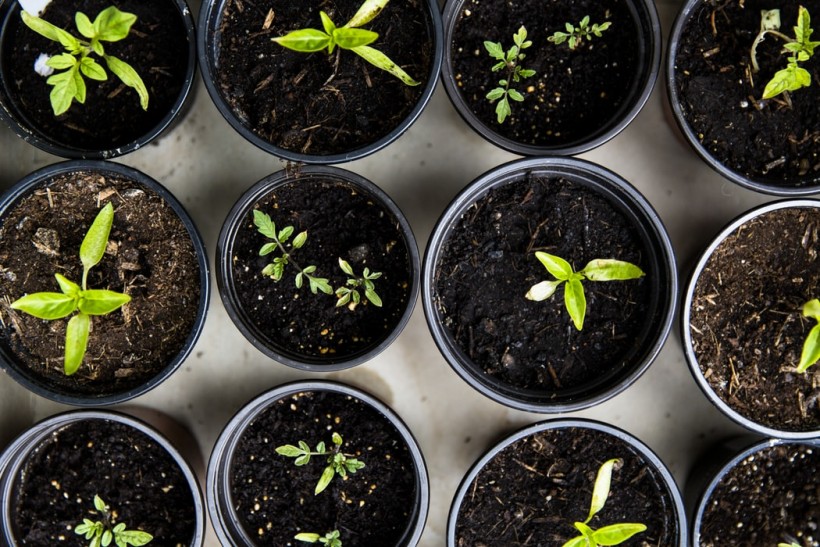A seed bank, as the name suggests, is used to store seeds to preserve their genetic diversity. In another way, seed banks can be considered as a type of gene banks as they are intended to preserve genes. This gives you a brief guide about seed banks and how they work.
Why Store Seeds?
There are numerous reasons to store seeds. Some of them are mentioned below.
- To increase yield, nutritional quality, taste, disease resistance, and drought tolerance of crops
- To conserve biodiversity ex-situ by precluding the loss of genetic diversity in imperiled or rare plant species
Why Seed Banks?
Plants that were used centuries ago are not used frequently nowadays. Seed banks are, therefore, used to preserve their cultural and historical value. Seeds in seed banks are stored at a constant low temperate and moisture to guard them against the loss of genetic properties. Seed banks can also be considered as seed libraries that contain information about combating plant stress and how to create genetically modified seeds. Seed banks are not a new initiative and date back to several decades and centuries. According to 420expertadviser, seed banks are the best way to go for purchasing high-quality seeds at affordable prices.
Storage Conditions and Regeneration
Seeds have life, and keeping them alive and viable for an extended period requires adequate storage temperature and moisture. As these seeds mature to the mother plants, many of them acquire the innate ability to survive death. Moreover, the survival of these orthodox seeds can be extended by low temperature and moisture storage. However, the level of dryness and moisture is variable and depends upon the longevity required and investment that is affordable in the infrastructure.
According to the generalized rule, the relative temperature (in Fahrenheit) and humidity should be less than 100. Another rule suggests that the reduction of temperature by 10 degrees Fahrenheit and humidity by 1 percent can double the life span of a seed.
Challenges
Similar to any other storage and preservation facility, seed banks also face challenges. Some common challenges faced by seed banks are:
- Identifying the ideal seed to store is the biggest challenge. The collection needs to be relevant, useful to the public, and provide considerable genetic diversity. The collection should be efficient and unique without any duplicate materials.
- Seed banks intent on preserving seeds for hundreds of years, which is probably a big challenge. Orthodox seeds are susceptible to regular storage customs, but many seed types require unconventional methods. Technology advancements are common and happen at a rapid pace, making it difficult for seed banks to upgrade regularly.
Alternatives of Seed Banks
Other than seed banks, there are a few methods that can be used to keep seeds alive and preserve their genetic diversity. Some of these methods include:
- In-situ conservation is a renowned conservation technique that includes the creation of natural habitats (like National Wildlife Refuges and Natural Parks) to preserve the targeted seed. In-situ conservation is an on-farm process that allows plants to use the process of natural selection.
- Seed Libraries, are similar to seed banks and are used to preserve the local genetic material.
Longevity
Seeds can be preserved for hundreds, even thousands of years. The oldest carbon-14 seed was the seed of a Judean date palm and was around 2000 years old. In 2012, Russian scientists claimed that they had regenerated a leaf companion from a seed 332,000 years old.
Benefits
The benefits of seed banking are:
- Preservation of Crop Diversity: One of the most important advantages of seed banks is the preservation of crop diversity. Since different types of the same species exist due to adaptive nature, it is essential to preserve diversity.
- Protection from Climate Change: Since the planet is suffering a rapid increase in climate due to various human activities, it is essential to preserve the crops. Crops are prone to extinction because of climate rise, and seed banks ensure that this extinction is avoided.
- Protection from Natural Disasters: Nature disasters play a significant role in the destruction of crops. Seedbanks are used to safeguard crops from such annihilation.
- Disease Resistance: Crop diseases are contagious and can be deadly for the whole group. Seed banks ensure such diseases are identified and eliminated at an early stage.
- Preservation from Man-made Disasters: Disasters like wars and other man-made blunders can destroy the crops. Seed banks make sure crops are preserved from such human disasters.
Conclusion
Seed banks are an excellent initiative that has been around for decades and centuries. Seed banks are used for preserving the genetic diversity of crops that otherwise are on the verge of losing their existence. Seed banks protect crops from various disasters, including climatic change, natural disasters, and disastrous human activities. Seed banks are usually funded by the public and are considered more like non-profit organizations. Alternatives to seed banks include seed libraries and in-situ conservation.
© 2024 NatureWorldNews.com All rights reserved. Do not reproduce without permission.






